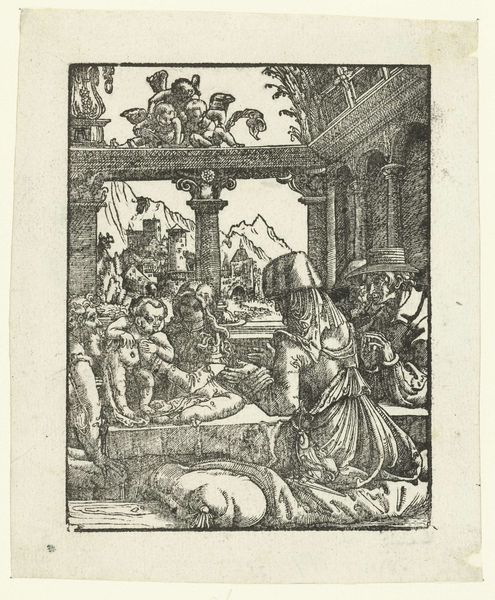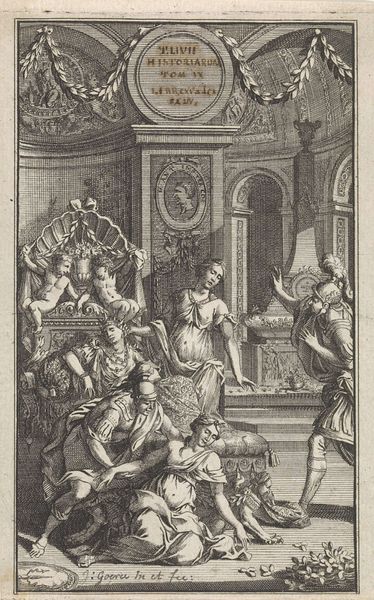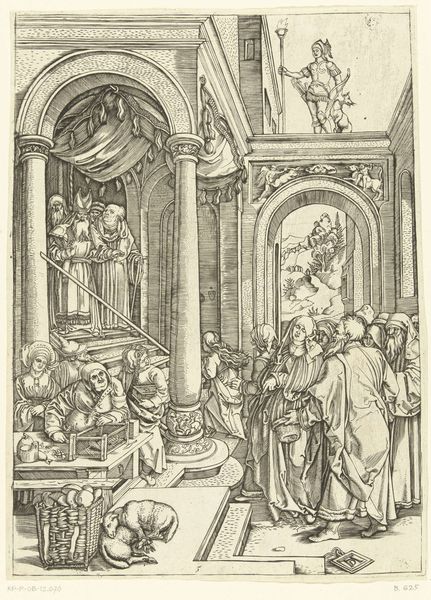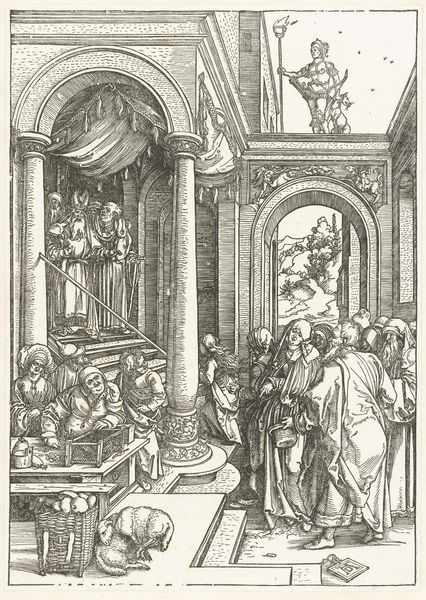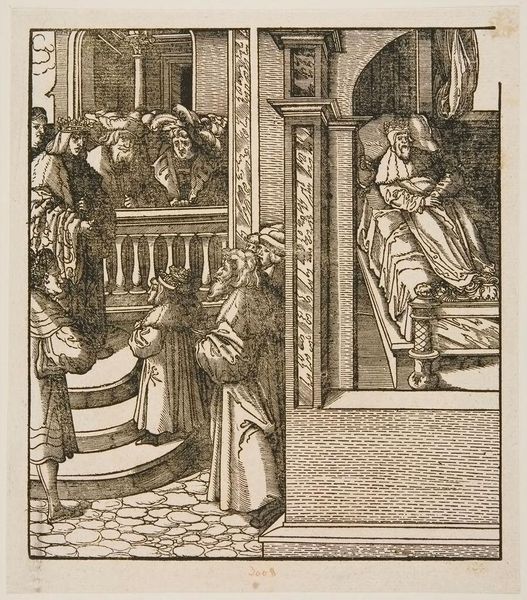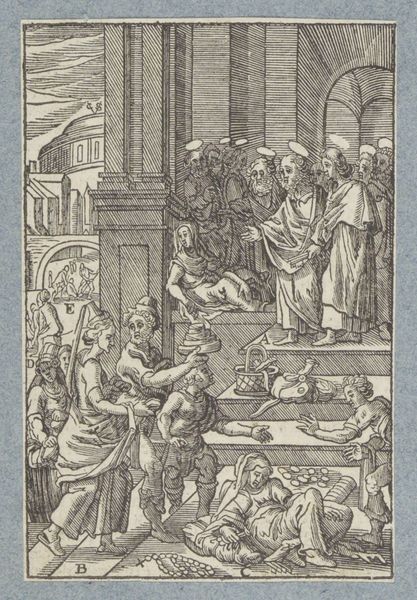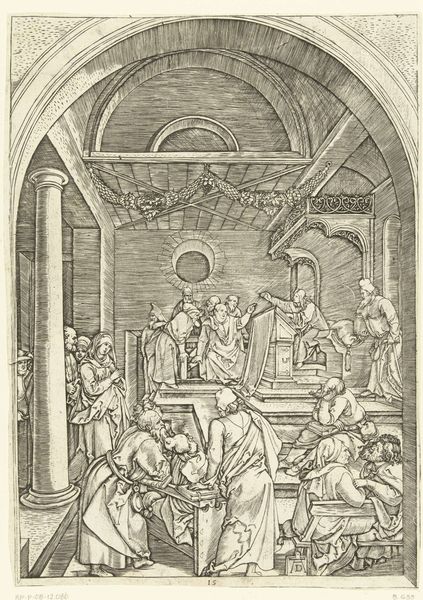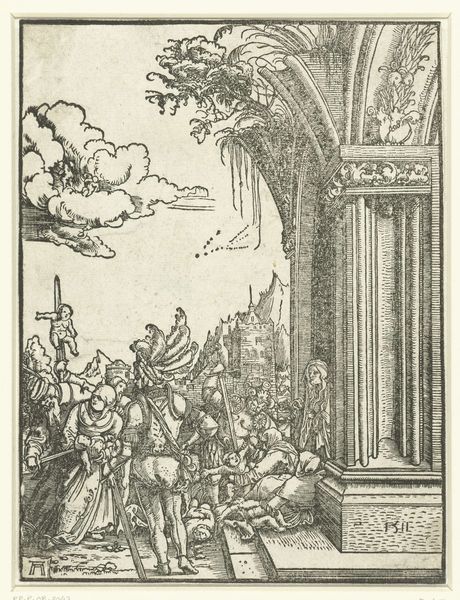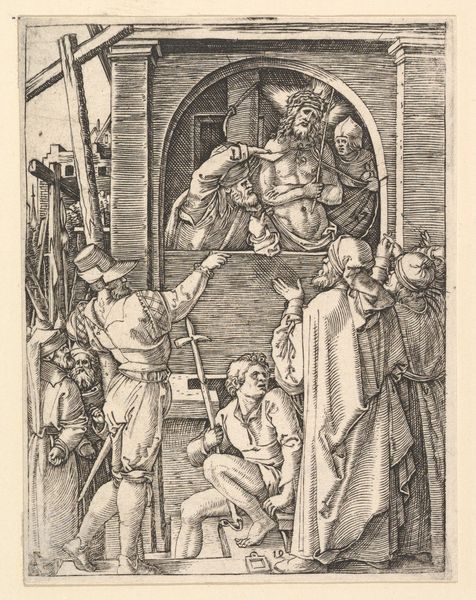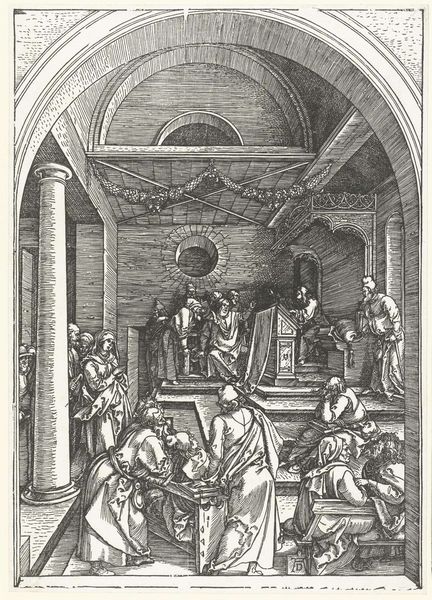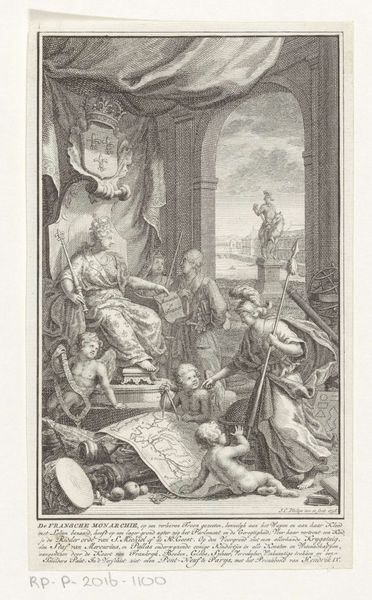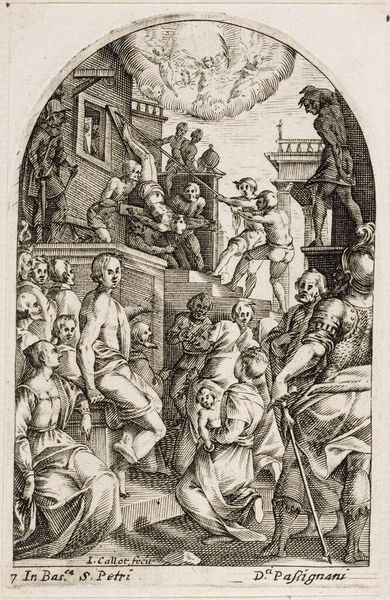
print, engraving
# print
#
figuration
#
history-painting
#
italian-renaissance
#
engraving
Dimensions: height 122 mm, width 96 mm
Copyright: Rijks Museum: Open Domain
Editor: Here we have Albrecht Altdorfer’s engraving, "The Holy Family with Anna," dating from around 1506 to 1538. The intricate lines create a scene that feels both intimate and grand. How do you interpret this work through a formal lens? Curator: Notice how Altdorfer constructs the composition. The architecture—columns and an ornate ledge populated by putti—frames a distant, idealized landscape. These architectural elements, however, are not orthogonal; they twist and turn in a manner that creates spatial tension. What purpose does such a seemingly simple yet powerful composition hold? Editor: Is it creating an otherworldly sacred space, distinct from reality, making it timeless? Curator: Precisely. Observe, too, the play of light and shadow achieved through the density and direction of the engraving lines. Consider the treatment of the figures versus the backdrop. What is the affect in rendering? Editor: The foreground figures seem almost sculptural because of the densely-worked cross-hatching which adds volume. The landscape in contrast appears flat, like a tapestry. This distinction might serve to prioritize the figures—especially the Christ Child—drawing our eye to them. Curator: The interplay of surface and depth contributes to the artwork's overall dynamic. Did you perceive the tension between detail and broader form? Editor: Absolutely, the minute details invite us in but the compressed space pushes us back. The push-pull enhances the contemplative mood. Thanks, I see it much more clearly now. Curator: Indeed, attending to formal qualities can unlock layers of meaning within even seemingly straightforward representational works.
Comments
No comments
Be the first to comment and join the conversation on the ultimate creative platform.
